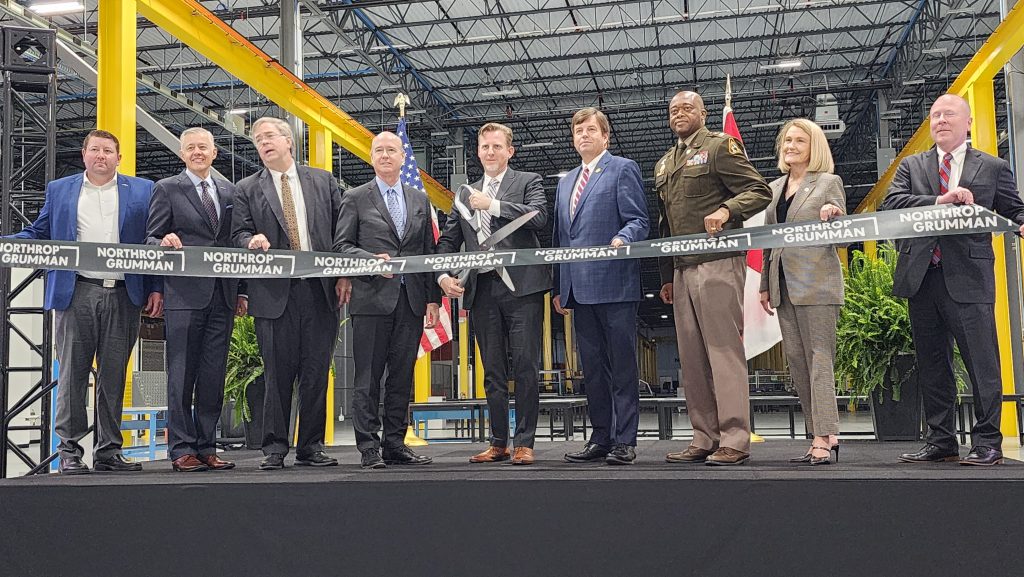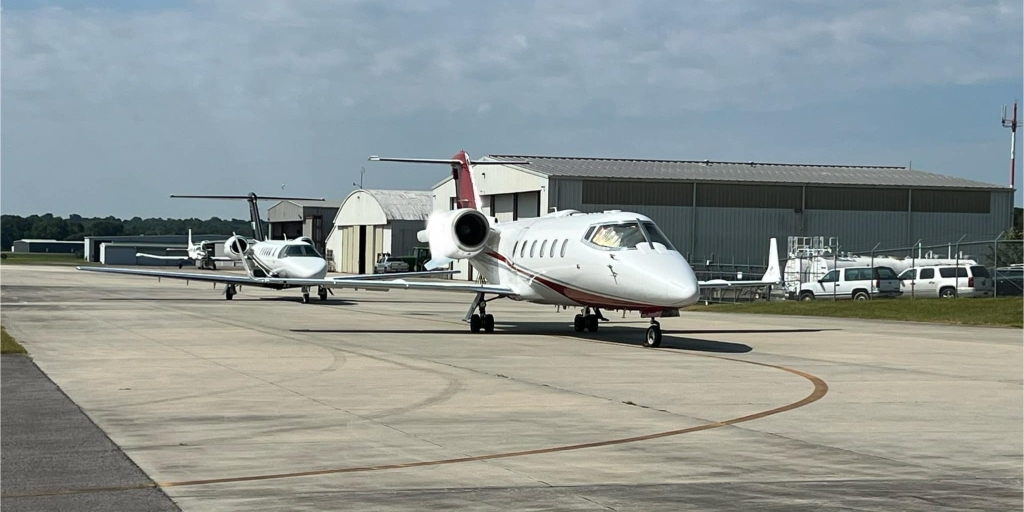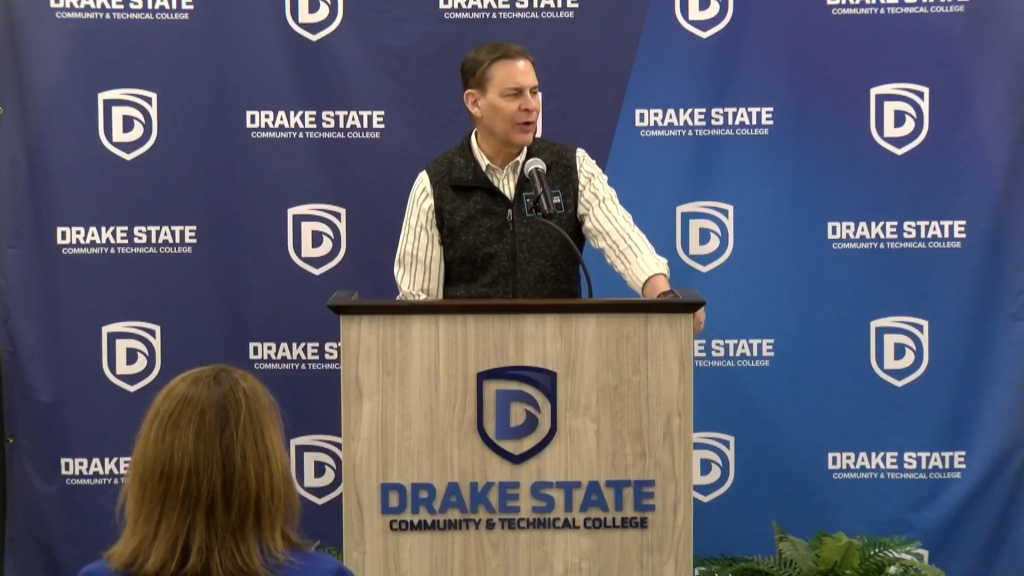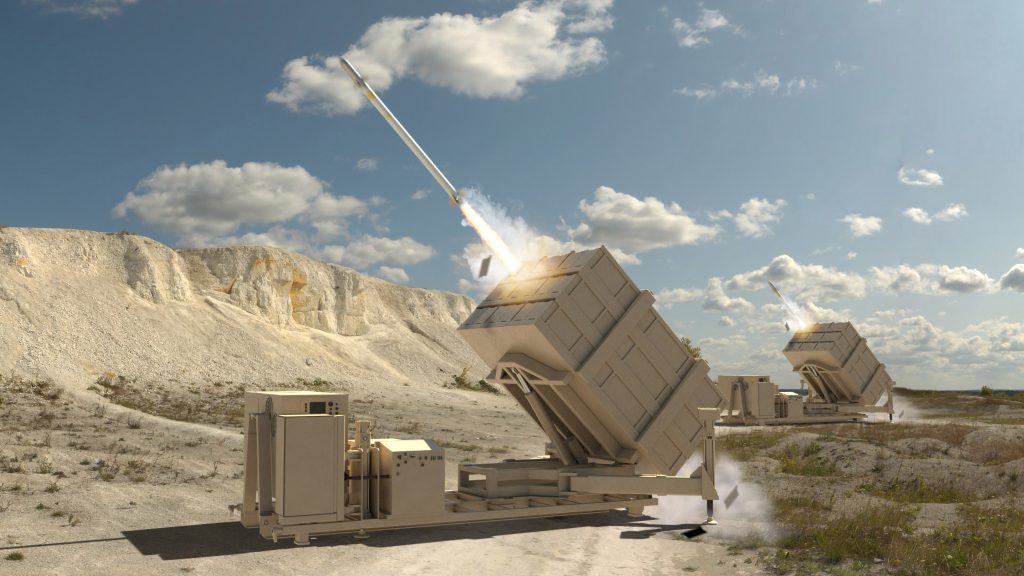It was an opening of “EPIC” proportions for Northrop Grumman.
The giant defense contractor unveiled its Enhanced Production and Integration Center (EPIC) in Madison today featuring 175,500 square feet of production space.
The new integration center will manage component integration for the Integrated Battle Command System (IBCS).
Ben Davies, president of Northrop Grumman Defense Systems, said the new facility builds on Northrop Grumman’s more than 70-year legacy of investing in Alabama.
“Since the 1950s, the Rocket City has been at the heart of American innovation and military technology leadership,” he said.
Davies said Northrop Grumman’s footprint across the Huntsville area stands at 900,000 square feet and more than 3,000 team members.
“I have seen this community’s dedication to national security first hand as we work across cities, counties, districts with support from leaders like Congressmen (Dale) Strong and (Robert) Aderholt and others here today from across the region, whose advocacy to help bring our vision to the state-of-the-art facility to life,” said Davies.
The IBCS system fuses sensor data for a single actionable picture of the full battlespace. Currently fielded in Poland, and planned for deployment in Guam as part of the Army program of record for integrated air and missile defense modernization, IBSC is wholly constructed in facilities in North Alabama.
Strong (R-Huntsville) said the new production facility for IBSC improves the country’s defense capabilities.
“Today, we’re here to celebrate the new state-of-the-art Production Facility for the Integrated Battle Command System, is a command and control system that will connect joint and coalition forces with kinds of technology, radar, sensors and shooters to help inform faster and smarter decisions on the battlefield,” said Strong. “This makes our defense stronger and more effective.”
In a recent meeting with President Donald Trump and Vice President J.D. Vance, Strong emphasized Huntsville’s significance in national defense.
“I can assure you that in my meeting with the president and vice president, just a matter of days ago, our conversation was about the capabilities right here in North Alabama,” he said. “This is a big deal and a lot of work to make it happen is done right here in the Rocket City. That says a lot about the talent in this community and how important the city is to our country’s national defense.
“Our finest hours are still ahead. Our time is now.”

Aderholt (R-Haleyville) said North Alabama has become the heart of America’s aerospace and defense corps.
“This facility is more than just brick and mortar,” he said. “It’s a symbol of what happens when private industry, when government and the community come together with a shared mission. That mission to keep our nation safe, to equip our war fighters with the tools they need to succeed and ensure that America remains the leader on the global stage.”
Col. Chris Hill, Project Manager for the Integrated Fires Mission Command (IFMC) Project Office, said the capability of IBSC will be key “as we protect our homeland.”
“We are at a time when the U.S. Army is laser-focused on rapidly delivering advanced integrated air and missile defense capability to protect the American interests and our allies goal,” he said.
Hill said the work being done in Huntsville directly impacts the nation’s strategic readiness.
“So your efforts resonate beyond these walls, directly protecting our service members and allies worldwide,” he said. “As a native Alabamian, I am very proud to know our state is leading the charge for the most impactful modernization to air defense in 40 years.”
The $20 million investment in EPIC doubles the size of the previous center and features 35,000 square feet of office space and can accommodate over several hundred employees in North Alabama.
Huntsville Mayor Tommy Battle said the EPIC facility was, well, epic.
“This is an epic day for an epic company with an epic workforce and an epic community” he said.
Battle said the production facility represents a $300 million a year economic impact in Alabama.
“For years and years, we have been known as a place where we do engineering, we do design, but we haven’t been doing as much production in the last 12 years,” he said. “We’ve started changing our method of business.”
“We want to design it. We want to engineer it. We want to produce it here.”
Courtesy of 256 Today.













